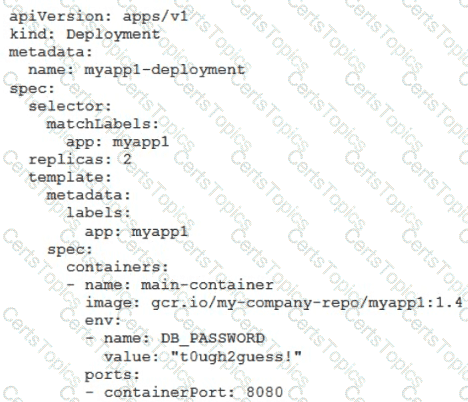You’ve deployed a microservice called myapp1 to a Google Kubernetes Engine cluster using the YAML file specified below:

You need to refactor this configuration so that the database password is not stored in plain text. You want to follow Google-recommended practices. What should you do?
You host your website on Compute Engine. The number of global users visiting your website is rapidly expanding. You need to minimize latency and support user growth in multiple geographical regions. You also want to follow Google-recommended practices and minimize operational costs. Which two actions should you take?
Choose 2 answers
Your company is moving its entire workload to Compute Engine. Some servers should be accessible through the Internet, and other servers should only be accessible over the internal network. All servers need to be able to talk to each other over specific ports and protocols. The current on-premises network relies on a demilitarized zone (DMZ) for the public servers and a Local Area Network (LAN) for the private servers. You need to design the networking infrastructure on
Google Cloud to match these requirements. What should you do?
You are configuring service accounts for an application that spans multiple projects. Virtual machines (VMs) running in the web-applications project need access to BigQuery datasets in the crm-databases project. You want to follow Google-recommended practices to grant access to the service account in the web-applications project. What should you do?